Boston Children's Museum
308 Congress Street, Boston, MA 02210
617-426-6500
© Boston Children’s Museum 2025
Website Design by Jackrabbit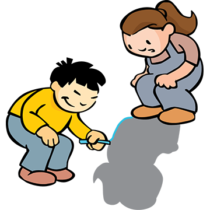
When we look up at the sky, it seems as though the sun moves across it throughout the day. This apparent movement of the sun across the sky is predictable, and can make observations about the sun by noting the relationship between its position in the sky and the shadows it creates on Earth. You even can tell approximately what time of day it is by observing the sun’s position in the sky. But that apparent motion can also lead to some confusion – is the sun moving across the sky, or is the Earth moving? Simple investigations like this one can provide early concrete connections to the sun, and a beginning understanding of the relationship between the sun and the Earth.
VIEW ACTIVITY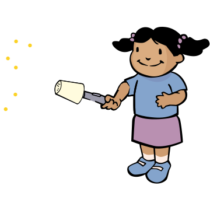
Constellations are pictures that people have imagined in the patterns of the stars, and they are familiar in some form or another to most children. It’s also fun to look for them at night…but why wait until night time? Creating homemade projections of these constellations is a fun way to connect to astronomy, and to engage in some basic problem solving and even practice some math. This activity is a good follow-up to Constellation Creation, from this curriculum.
VIEW ACTIVITY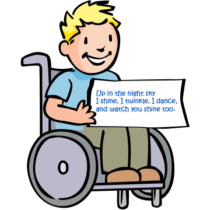
Looking up at the sky has inspired scientists, artists, musicians, poets, writers, and cultures around the world for thousands of years. Few things are as universally stirring, and while cultures and landscapes may vary around the world, the sky above us unites us all and finds expression in many forms. One of these forms is haiku, which is not only a low-barrier introduction to elements of poetry like form, sound, meter, mood, dominant impression, and more; it is also a way to connect with the science of “looking up”, to build vocabulary, and to learn more about a tradition from another culture.
VIEW ACTIVITY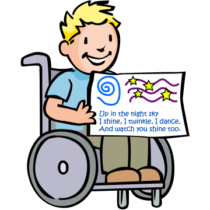
Looking up at the sky has inspired scientists, artists, musicians, poets, writers, and cultures around the world for thousands of years. Few things are as universally stirring, and while cultures and landscapes may vary around the world, the sky above us unites us all and finds expression in many forms. One of these forms of expression is haiga, which is a companion art form to haiku. Haiga paintings are inspired by listening to haiku poems. Try this activity after doing the Sky Haiku activity from this curriculum, and give your students another chance to reflect on the sky and the universe through art.
VIEW ACTIVITY
Design challenges are a great way for kids to develop a range of skills, like problem solving, communicating, observing, comparing, measuring, estimating, and lots more. This challenge, which is best for your older students, also asks children to examine properties of materials, practice engineering design, and learn about the properties of planets in our solar system.
VIEW ACTIVITY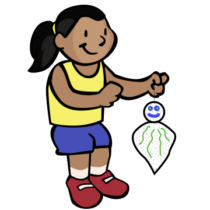
Many cultures have traditions related to weather, weather prediction and even trying to influence the weather, making the topic of meteorology not only a great entry point to science, but also to the shared connection every culture has to weather events. This activity is a great introduction to Japanese culture and a fun way to connect science, culture, and art together.
VIEW ACTIVITY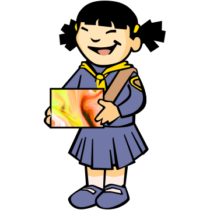
How can art help kids engage with science? The natural world is the source of so much inspiration in art, literature, invention and much more, and the images produced by NASA and others’ space telescopes is some of the most breathtaking and inspiring imagery imaginable. Associating science with art presents the world as a place filled with connections, and helps children to practice two often overlooked STEM skills – creativity and imagination. And by asking children to use astronomical images as inspiration for their artwork, you are also asking them to closely observe – and therefore learn more about – these astronomical objects and phenomena.
VIEW ACTIVITY
Constellations are pictures that people have imagined in the patterns of the stars. They are now accepted scientific ways of organizing our view of the night sky. But this idea that scientific classifications, like constellations, could have begun with imagination might surprise people. Albert Einstein once said, “Imagination is more important than knowledge.” Pretty smart. This activity invites children to look at star patterns and imagine their own new constellations, while practicing STEM skills like observing, recognizing patterns and thinking creatively. This kind of creative activity encourages children to make personal connections to objects in the sky, and to seek out their new constellation when they look up at night.
VIEW ACTIVITY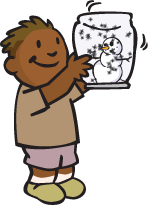
It is easy to introduce an art activity by telling children what materials they will use, based on what you know works best. But by asking them to conduct investigations around possible materials, they will not only be engaging in scientific thinking and learning about experimental design; they will also have a clearer understanding of the materials themselves, how they behave, and why they are chosen for use.
VIEW ACTIVITY
Children are getting fewer and fewer chances to explore with interesting materials—but few things spark creativity in kids more than a set of interesting materials and the promise of creating something wonderful. It is likely that most of your children will have come in contact with snow globes before…but also likely that none of them imagined they could create their own from simple ingredients.
VIEW ACTIVITY